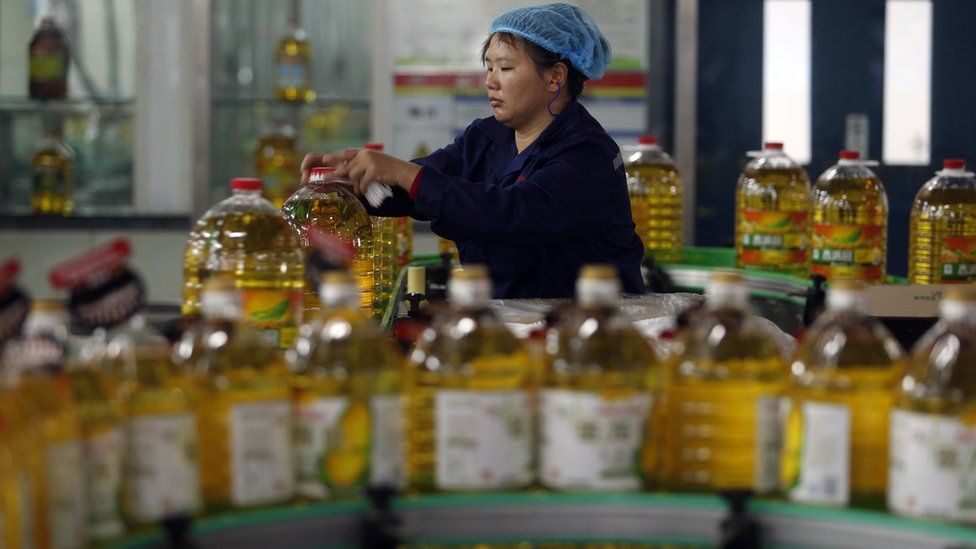Chinese manufacturing activity worsens
- Published

Factory activity in the world's second largest economy, China, deteriorated in November as the manufacturing sector continued to shrink.
The official purchasing managers' index (PMI) fell below forecasts to 49.6 in November, down from the previous month's reading of 49.8.
A reading below the 50-mark indicates contraction in the sector, while one above suggests growth.
China's factories have struggled to gain momentum in a slowing economy.
The Asian giant is headed for its slowest growth in a quarter of a century this year and economists are concerned that it will miss Beijing's official growth target of 7%.
Activity in its vast manufacturing sector shrank for the fourth consecutive month in November and hit a three-year low.
The government is trying to move China from an export-driven economy to a consumption-based one.
Analysis: Karishma Vaswani, BBC Asia business correspondent
China's manufacturing sector is a key gauge of how the economy is doing.
It was the driving force of economic growth for decades and helped China become the workshop of the world.
As Chinese factories pumped millions of cheap goods out at a record pace, income levels on the mainland rose for workers, creating a brand new middle class.
But now demand for Chinese goods is drying up - both inside and outside of China, which has led to these weaker figures.
Beijing has been under pressure to boost slowing economic growth in the country especially in the crucial manufacturing sector.
And so over the last few months the government has released a raft of stimulus measures to boost growth - including cutting interest rates six times and fast-tracking investment approvals for new building projects and factory plants.
But so far these measures don't appear to have worked.
Resilient services sector
Activity in the country's services sector did pick up last month which helped offset the decline in manufacturing.
The services PMI rose to 53.6 from 53.1 in October.
Bernard Aw, market strategist at trading firm IG, said the improvement in the services PMI had reinforced the view that the sector is "cushioning" growth.
Easing measures by the government may also be supporting growth, according to Julian Evans-Pritchard, China economist at research firm Capital Economics.
"There are some hints that accelerating credit growth and fiscal spending, on the back of recent policy easing, may have continued to support investment growth last month," he said in a note on Tuesday.
China's central bank has cut interest rates six times since last November, among a series of other measures to stimulate the economy.
The Caixin/Markit manufacturing PMI contracted for the ninth month in a row in November, but factory activity shrank at a slower pace than the pervious month.
The private PMI survey, which focuses more on small to medium-size businesses, was up to 48.6 in November, from 48.3 in October.
In reaction to the manufacturing data, the Shanghai Composite index was down 0.2% to 3,438.32 points - bucking the higher trend in the rest of Asia.
- Published30 November 2015
- Published1 November 2015
- Published1 October 2015